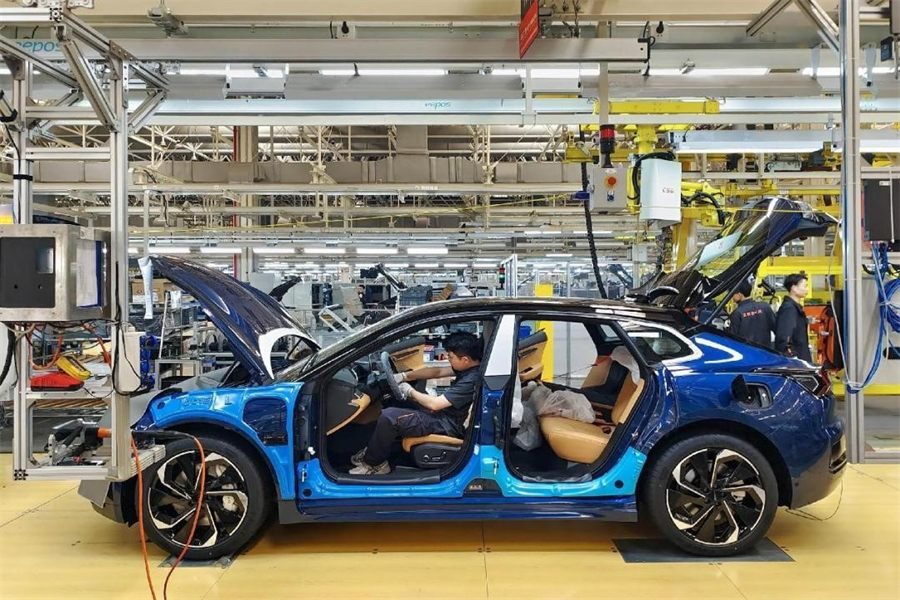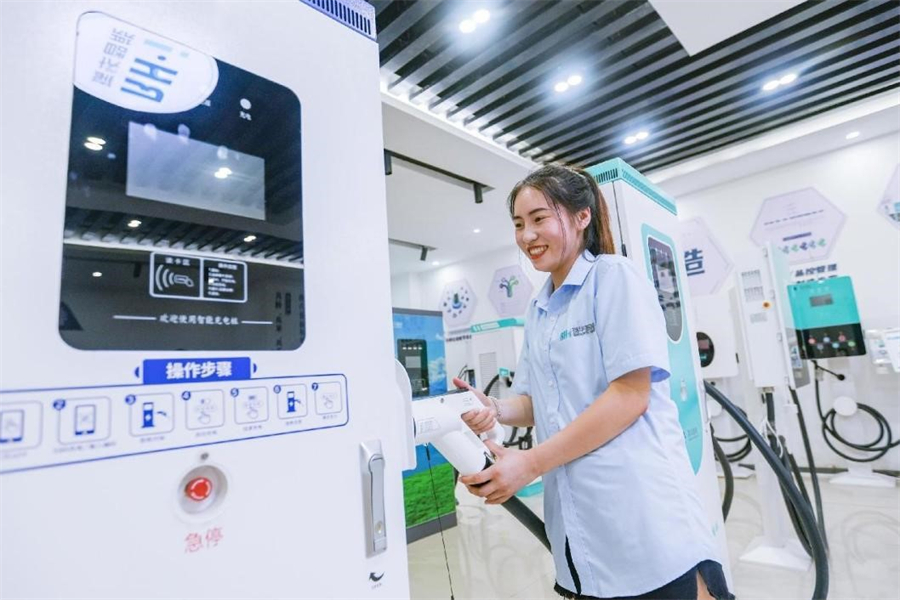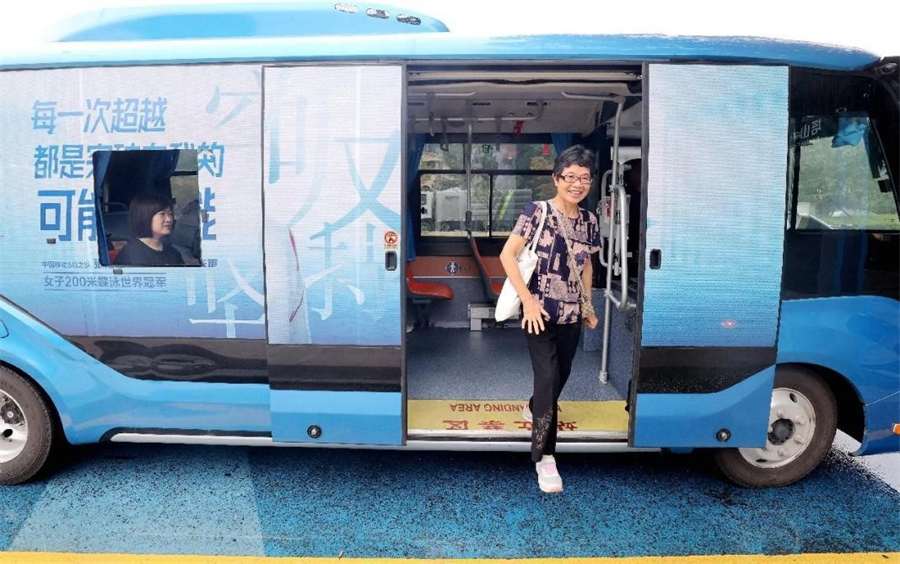China promotes integrated development of vehicles, energy, roads, cloud

New energy vehicles are assembled in a smart factory of Zeekr, a premium electric automobile brand owned by Chinese auto giant Geely, in Ningbo, east China's Zhejiang province. [People's Daily Online/Hu Xuejun]
China became the world's largest producer, consumer and exporter of automobiles in the first half of 2023, and new energy vehicles (NEVs) played a pivotal role in driving this remarkable achievement.
The development of the NEV industry, the evolution of energy storage, big data, cloud computing and intelligent connected vehicle technologies, as well as the improvement of roads and other infrastructure, are all creating a promising future for the development of an integrated "vehicle-energy-infrastructure-cloud" industrial ecosystem.
The ecosystem, which means smart vehicles, reliable new energy industries, intelligent road infrastructure and real-time cloud computing services, is expected to make transportation smarter, greener and more convenient.
To achieve this, it is crucial to have reliable energy infrastructure in place for smart vehicles.
Over recent years, Chinese NEV manufacturers and battery charging and swapping enterprises have collaborated to drive innovation in technology and business models, such as combined power exchange and high-voltage fast charging. Together, they have established the world's largest network for battery charging and swapping, laying a solid foundation for the popularization of NEVs.
For some NEV users, however, the inconvenience of battery charging and swapping still poses a challenge. Relevant enterprises are accelerating technological development to further improve relevant infrastructure, alleviate the "range anxiety"-the NEV driver's fear that the battery will not have sufficient charge to complete a long journey, and expand the NEV industry.
The profound integration of "smart vehicle" and "reliable energy" is also reflected in the fact that NEVs are both energy consumers and energy carriers, serving as highly efficient energy storage units.

Charging piles for new energy vehicles are manufactured in a workshop of a tech firm in east China's Jiangxi province. [People's Daily Online/Hu Bowei]
On the one hand, clean energy powers NEVs, effectively lowering carbon emissions and contributing to green transportation. On the other hand, the technological development of automotive power batteries drives the further maturation of energy storage batteries, reducing the cost and promoting the upgrading of the energy storage sector.
Besides, the increasing NEVs, serving as mobile energy storage units, also help address the issues of generating instability and volatility in clean energy sources, particularly photovoltaic and wind power.
Therefore, NEVs are both terminals and medium. The mutual promotion and synergetic development between "smart vehicles" and "reliable energy" are conducive to driving the energy revolution.
To make NEVs smarter, intelligent road infrastructure and real-time cloud computing services are necessary. Autopilot systems are becoming a standard feature of NEVs.
According to statistics, 7 million intelligent connected vehicles sold in China last year were equipped with autopilot assistance systems, up 45.6 percent year-on-year, and 48 percent of NEVs were installed with such systems.
In the past, the autopilot relied more on the vehicle's configuration, such as millimeter-wave radar and LiDAR. Future versions of such systems will make greater use of external assistance.
Building intelligent road infrastructure aims to achieve vehicle-road coordination, which not only expands the intelligent perception range of individual vehicles to promote autonomous driving, but also provides an efficient and reliable decision-making basis for traffic command and dispatch, enhancing the overall capacity for road traffic management.

A passenger gets off an autopilot bus in Deqing county, Huzhou, east China's Zhejiang province. [People's Daily Online/Xie Shangguo]
To achieve this, real-time cloud computing services are crucial. An integrated open data public service platform and cloud control platform can be constructed to provide high concurrency access, real-time computing, application hosting, data openness, and decision control services for vehicle-mounted terminals, roadside intelligent facilities, and third-party connected vehicle platforms.
Such services offer robust data and computing power support for autonomous driving, vehicle-road coordination, and smart transportation.
It is a systematic project to build a "vehicle-energy-infrastructure-cloud" industrial ecosystem.
Currently, China is accelerating technological innovation and supporting profound cross-border collaboration between enterprises, universities, research institutions, and end users. Efforts are being made to tackle key technologies such as automotive chips, operating systems, and high-precision sensors.
At the same time, the policy framework is being continuously improved, accompanied by corresponding regulations and public services.
It is believed that with the concerted efforts of all relevant parties, the high-quality development of the NEV industry can be efficiently promoted, making transportation smarter and more convenient.
Zhang Xiyong is a researcher with a high-end think tank on sustainable transportation innovation under China's Ministry of Transport and Beijing Jiaotong University.
























